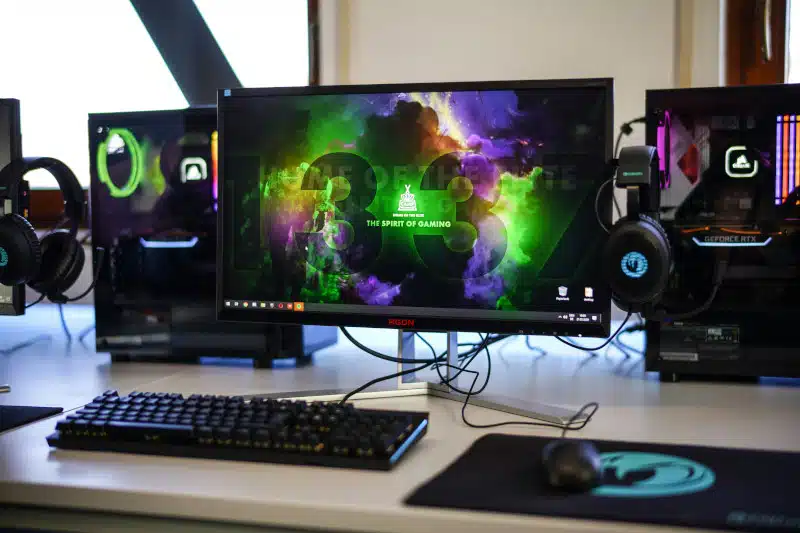
Before building a gaming PC, you’ll need parts that match your desired performance level and budget.
Having a computer designed to fulfill your gaming needs is a great feeling.
Building a custom gaming PC with your selected parts is the best way.
To top it off, a great gaming PC doesn’t need to cost much money or require a computer degree.
What are the benefits of building your gaming PC?
- Building your gaming PC is less expensive compared to similar pre-assembled systems. Moreover, when you assemble your gaming system, you will have a custom PC tailored to your games.
- You can pick a motherboard of your choice, making it easy to upgrade parts.
- Selecting your motherboard gives you total control over your gaming PC.
- It is important to decide on the components and ensure that their quality meets the desired specifications when populating the board.
- A gaming PC allows you to customize the layout of your case for optimal airflow. Adding cooling features such as liquid cooling and other fans promotes good airflow.
- Additionally, you get a gaming PC free from useless software called “bloatware.” Keeping bloatware out of the system will save memory and excessive hard disk usage, which makes for a better running machine in the long run.
- Finally, a completed gaming PC build is something you can be proud of and enjoy for many years.
Below is a list of the main components you will need to build a gaming PC.
PARTS NEEDED TO BUILD A GAMING PC
- PROCESSOR
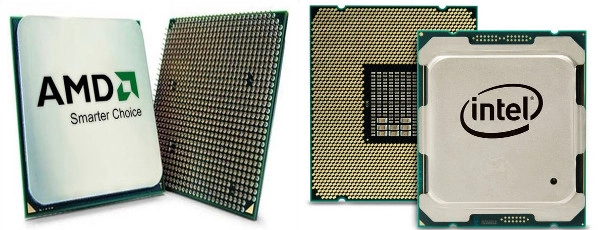
The central processing unit (CPU), or the “processor,” is the brains of your gaming PC. It manages and performs a list of commands a program (software) sends.
The CPU completes each “command” and sends the instructions to other hardware throughout the PC system to direct each component when they need to execute a task.
How quickly it can accomplish this is dependent upon processor speed.
According to Intel,
Core count and clock speed are two primary performance metrics associated with CPUs. Core count refers to the number of processors the CPU has or the tasks the processor can accomplish simultaneously.
Clock speed refers to how rapidly the CPU performs each task. Some higher-end processors feature hyper-threading. Hyper-threading allows each core to run many threads and performs better on threaded-supported software.
AMD and Intel are the two dominant CPU manufacturers. The first choice is which platform to use for your gaming PC.
Thankfully, there is enough data on the web to help you make this critical decision. Research your favorite game forums and determine which CPU performs best for your budget.
Intel Core i3 or AMD Ryzen 3 is suitable for low-end and some mid-range gaming PCs.
Intel Core i5 or AMD Ryzen 5 suits upper mid-range and high-end gaming PCs.
The Intel Core i7 or AMD Ryzen 7 will be your best bet to run multiple high-end GPUs.
Ultimately, your chosen processor will determine whether you will buy an AMD or Intel motherboard.
- MOTHERBOARD
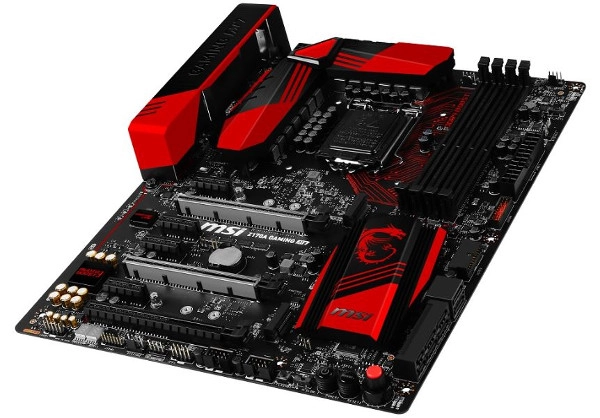
The main circuit board (aka motherboard) acts as the central nervous system of the gaming PC. It allows all the connected components to communicate with one another and carry out the CPU commands.
Circuit boards come in different sizes. The most common form factors for gaming computers are ATX, Micro-ATX, and Mini-ITX.

Your CPU selection will determine the socket type of the motherboard.
In addition, the motherboard will also dictate the chipset, the form factor of the case, the number of PCI Express x16 slots, the memory technology used (DDR 4, DDR3, etc.), the number of memory modules, storage form factor (2.5-inch SATA, mSATA, or M.2) and storage interface (SATA or PCIe).
In my opinion, the Micro-ATX is an excellent option to begin your first gaming PC build.
- RAM
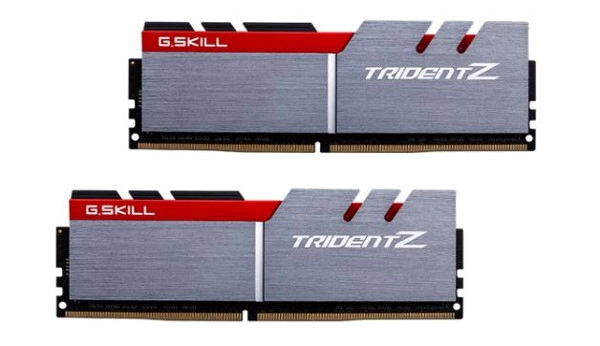
Random Access Memory (RAM) is where data (instructions) from programs are temporarily stored. The CPU must access RAM quickly and use it in all its computer operations.
RAM technology is substantially faster than any form of storage presently available. The disadvantage is that memory modules must be powered continuously to store data. If you experience a loss of power, then all data is lost.
Remember to find out what your processor and motherboard can support when shopping for RAM. The motherboard’s vendor website will have this information. The Qualified Vendor List (QVL) will list compatible memory modules for your board.
I think 16 GB of RAM should be the minimum for a gaming PC. Not having enough memory can impact gaming performance.
The manual will list the minimum and maximum RAM operating frequency. For DDR4, this generally ranges between 2133MHz and 3200MHz.
Faster and more expensive RAM modules can reach speeds of up to 4600MHz. However, the framerate gains from higher-frequency RAM will be negligible.
Look for memory that supports Intel® Extreme Memory Profile (Intel® XMP). XMP makes it easy to overclock RAM modules that run at lower-than-advertised speeds with predefined and tested profiles.
With the correct memory, your gaming PC will run efficiently and give you smooth frame rates without lagging.
- GRAPHICS PROCESSING UNIT (GPU)

The Graphics Processing Unit (GPU, also known as the graphics card or video card) is perhaps a gaming PC’s most significant piece of hardware.
Its primary function is to process and render game graphics images to your computer monitor.
A GPU is a must-have for any gamer wanting to play today’s demanding, graphics-heavy games.
A key point to remember is to select a graphics card that consistently produces frame rates of at least 60 frames per second (FPS) at your chosen monitor resolution. 60 FPS is the target goal for most gaming PCs.
You’ll also want to look for GPUs with dedicated memory or Video RAM (VRAM). The more VRAM the card has, the better its performance.
A tip from Intel: The graphics processing unit is not the only component that impacts framerates. So balancing your gaming PC build is imperative, or you’ll encounter performance bottlenecks elsewhere.
Presently, two vendors, Nvidia and AMD, produce GPUs. While Nvidia and AMD are responsible for providing the GPUs, most other companies make the actual graphics cards.
Both vendors have their hardware rebranded and sold through companies like Asus, MSI, EVGA, Gigabyte, Zotac, and Sapphire.
For GPU performance and rankings, check out Toms’s hardware.
Research game forums and determine which graphics cards work best for your gaming PC setup.
Another site that may be of help is the video card benchmark.
- STORAGE

Gamers use two main types of storage drive technology: Hard Disk Drives (HDD) and Solid-State Drives (SSD). All your files, games, and the operating system reside in the storage drive.
The Hard Disk Drive was the only storage form available in the past, and it’s still the most popular means of storage today. This is in part due to its affordability and high capacity.
The standard drive is 1 TB and offers the best value per dollar for those with an extremely tight budget.
The hard drive size for gaming computers will be 3.5 inches and have a rotational speed of 7,200 RPM. The 7,200-rpm drive will offer better performance than the slower 5,400-rpm drive.
Western Digital, Seagate, Hitachi, and Toshiba are popular hard drive manufacturers.
Solid State Drives offer exceptional performance, quicker boot and load times, and are much faster than traditional HDDs. The downside, currently, is they cost more money per gigabyte.
The good news is that prices are steadily dropping year after year.
The newer SSD protocol is NVMe, which stands for Non-Volatile Memory Express. This protocol uses the PCI Express* interface to achieve superior performance but is costly per gigabyte.
The best gaming PC setup is a 500GB SSD for the boot drive, which contains the OS and 1TB WD Black for game storage. This solution offers the best of both technologies and is an affordable choice.
SSD manufacturers are Samsung, SanDisk, Crucial, and Kingston, to name a few. If you seek the best performance for your gaming PC and your budget allows, choose a Solid-State Drive for all your storage needs.
- POWER SUPPLY UNIT (PSU)
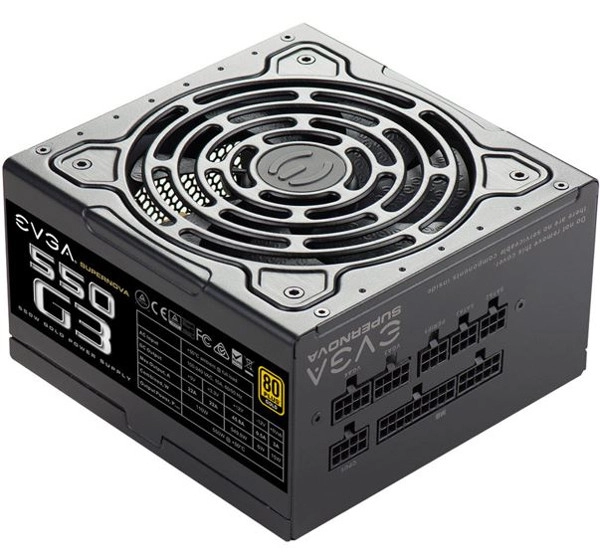
To bring life to your gaming PC, you will need hardware that reliably delivers power to all its internal components, which means buying a power supply unit (PSU).
A power supply must be powerful enough to handle all current and future system hardware.
A high-powered performance gaming PC will need a robust power supply to run efficiently.
Don’t go the cheap route with this critical PC component because a low-quality power supply can cause instability or severe damage to your system.
Here are six things to keep in mind when selecting a PSU.
1. SELECT THE RIGHT WATTAGE:
Several online power supply calculators will let you enter your system specs and give you an estimate of the load wattage needed for your computer build.
Go here: https://outervision.com/power-supply-calculator. You should be safe in choosing a PSU that is at least 150-200 Watts higher than your total load wattage.
For example, my PC load wattage is 374 watts (around 400). Adding 150-200 gives me a range of 550-600W. Since I will be upgrading in the future and want to maintain a safe margin, I decided to go with 650W.
2. BUY FROM A REPUTABLE MANUFACTURER:
Top names offering power supplies include Corsair, EVGA, Cooler Master, SilverStone, and Antec.
3. BUY ONE WITH A GOOD WARRANTY:
Power supply failure can occur when you least expect it. Check the warranty term before you buy. Current warranty terms are 3,5,7 and 10 years.
4. MODULAR SUPPORT:
The choices are Non-modular, Semi-modular, or Full-modular. Full-modular PSUs make cable management easier and help with the airflow.
Another advantage of modular systems is that they reduce clutter, making your gaming PC look neater and better organized.
5. COMPATIBILITY:
Verify the correct power connectors for the CPU (4,6, or 8 pins) and graphics card. Ensure the PSU has suitable connectors for the rest of your gaming PC components.
6. EFFICIENCY:
The 80 Plus standard is the minimum efficiency rating for a power supply. Heat loss accounts for 20%.
Other classifications include Bronze, Silver, Gold, Platinum, and Titanium. Each is more efficient than the previous level. Using a power supply with a higher classification can lower energy costs.
See the chart below.

- CASE
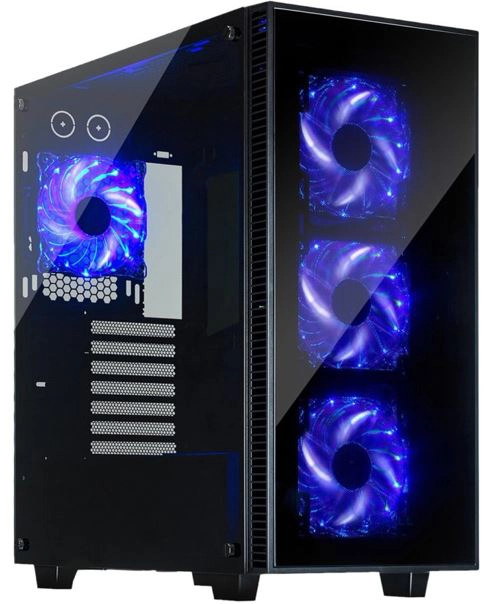
Now comes the moment to decide which case will house all your gaming PC hardware.
The motherboard’s form factor has already decided the case’s form factor. Of course, you can always purchase a case with more room, but in the end, your budget will determine that.
There are four types of mainstream cases:
- Mini Tower: designed for Mini ITX motherboards.
- Micro Tower: designed for Micro ATX motherboards.
- Mid Tower: designed for ATX motherboards.
- Full Tower: designed for EATX motherboards.
For most gamers, the mid-tower case will fit the bill since it can hold a standard ATX motherboard or Micro ATX and has plenty of room for a full-length graphics card.
Here are some essential aspects to keep in mind.
- Besides the motherboard, you must ensure the graphics card fits the case. Case manufacturers will list the maximum GPU dimensions the case can accommodate.
- Choose a PC case that’s large enough to accommodate future expansions and multiple upgrades.
- Look for a gaming case with preinstalled cooling fans. The minimum setup would be two 120/140mm fans in the front and one 120/140mm exhaust fan in the rear.
- If you plan to use an all-in-one liquid cooling system, ensure that your computer case can support a 240mm, 280mm, or 360 mm one.
- A tool-free design will make it easier to open the case without grabbing a screwdriver.
- Lastly, check online reviews. You can pick up additional information that may be relevant to your case.
- SYSTEM COOLING

- CPU COOLER
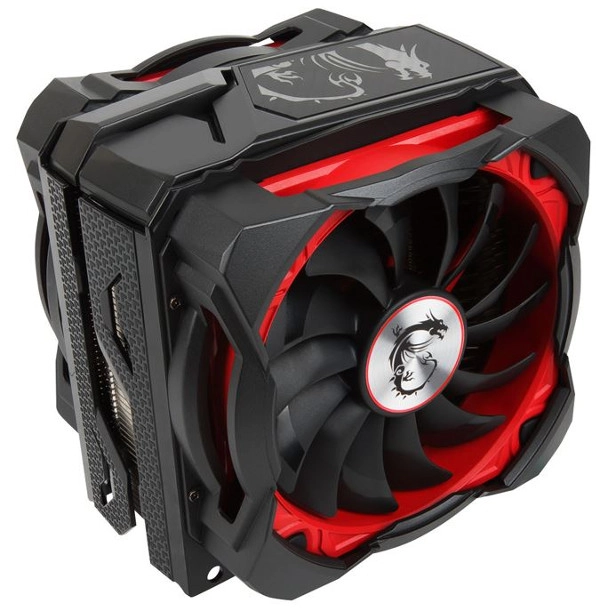
The processor gives off lots of heat, and a top-of-the-line CPU cooler is necessary.
Stock coolers are inadequate for keeping the CPU cool enough for prolonged gaming sessions. For this reason, I recommend buying an aftermarket cooler.
Noctua NH-D15, Master Air Maker 8 by Coolermaster, Phanteks PH-TC14PE, and Arctic Freezer 33 eSports are just a few air coolers you can research.
Check the dimensions to make sure the air cooler you select is sized to fit inside the case and is compatible with your processor.
High-quality thermal paste is an essential component that is vital for proper heat transfer between the processor and heatsink.
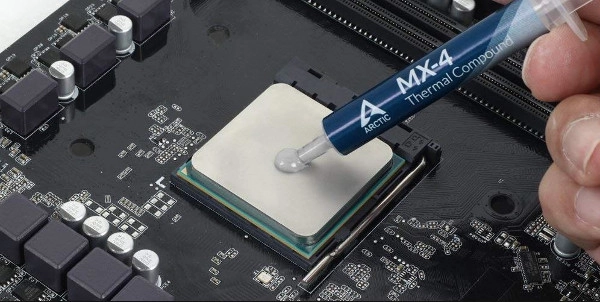
Not having enough thermal paste on the CPU die is more harmful than having too much. Excessive thermal paste application wastes money and looks sloppy.
Finally, liquid cooling is another option for keeping the processor cool. A closed-loop liquid cooler, or All-in-One, is necessary for gamers who wish to overclock their system.
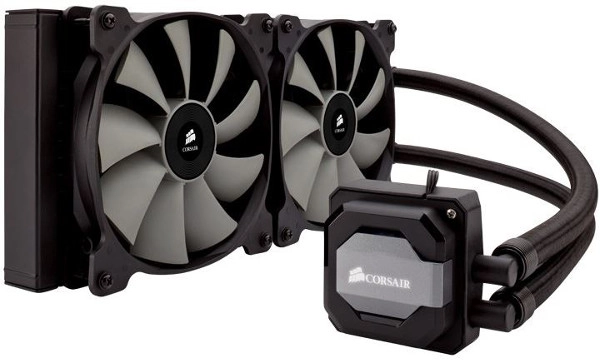
Choosing an air or liquid cooling option may depend on your budget and experience.
- OPTICAL DRIVE-CD/DVD ROM
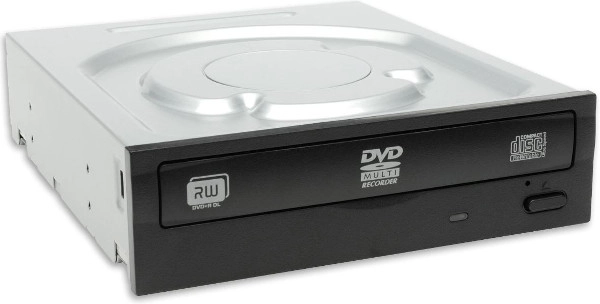
Optical Drives, aka CD/DVD ROM Drives, may not be needed for a dedicated gaming PC since many software games can be downloaded online today.
You can get an internal or external optical drive if you have game titles on CD/DVD or plan to play Blu-ray movies.
Companies like LG and Samsung offer reasonably priced optical drives.
- PERIPHERALS
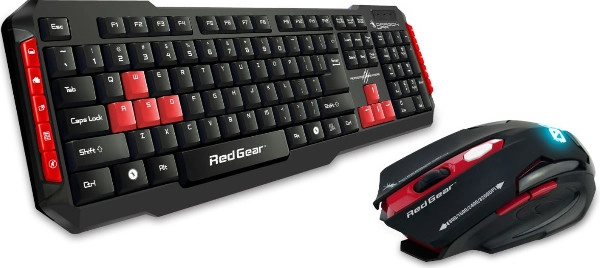
Any computer device that connects to your gaming PC through an input/output interface is considered a peripheral. Examples include the display monitor, keyboard, mouse, microphone, and speakers.
The monitor, mouse, and keyboard are necessary to finish setting up your system.
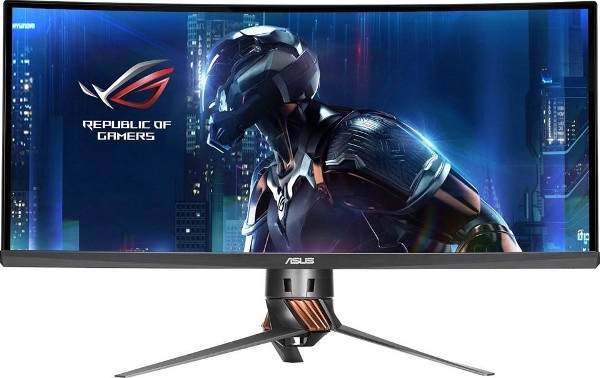
Moreover, pay particular attention when choosing a gaming monitor. Not all are created equal. Know the specs of your graphics card, as this will help you purchase the right display monitor.
There are several options to keep in mind when purchasing a monitor, such as:
Size:
- Gaming monitors generally range between 21-27 inches in size and are a perfect fit for desktop use. A larger-sized monitor would require your viewing distance to be further away.
Resolution:
- The maximum amount of individual pixels a monitor can display will determine the resolution. The more pixels a monitor can say, the cleaner and sharper the image.
- Screen resolution is one of the main factors that can impact the demand placed on your graphics card. Choose a graphics card that can handle your maximum display resolution.
- 1920×1080 (1080p): One of the most popular resolutions today, also known as Full High Definition, looks excellent on display monitors up to 24 inches diagonal.
- 2560×1440 (1440p): A Wide Quad HD display monitor, also known as 2k, is a big step up from 1080p. With this resolution, you will need a powerful GPU to achieve reasonable frame rates, near or over 60. It looks great on a gaming monitor, and you can expect image quality to be far more excellent than Full HD.
- 4096×2160 (2160): Ultra HD, also known as 4K, has become very popular with TVs but not so much with gaming monitors. A gaming enthusiast who does not have budget restraints and has a powerful gaming rig will get to enjoy exceptional image quality.
Refresh Rate:
- A monitor’s refresh rate is the number of frames it can display each second, measured in Hertz (Hz). The faster this occurs, the smoother the image will look.
- Most display monitors have a refresh rate of 60Hz, while the latest gaming monitors can support higher refresh rates of 144Hz and 240Hz.
Response Time:
- Response time is when a pixel changes from one color to another and is measured in milliseconds (ms). Based on the type of panel used, typical monitor response times are either 1ms-4ms.
Panel Type:
- Twisted-nematic (TN) or in-plane switching (IPS) are two types of gaming monitor panels.
- TN monitors produce super-fast response times at the expense of color accuracy and viewing angles.
- On the other hand, IPS panels deliver vivid colors and wider viewing angles. Response times for IPS monitors are no lower than 4ms.
If you’re gaming for pleasure, an IPS monitor will be your pick.
- CONNECTORS

The latest gaming monitors will have either HDMI or DisplayPort for video and audio input.
The newest generation of graphics cards will have similar video output. When building a new gaming PC, it’s best to avoid video cards with DVI and VGA connectors, as they are outdated.
CONCLUSION
In conclusion, buying parts to build a gaming PC can be as exciting as the build itself.
You will also learn a lot about the components that make your gaming PC work. Seeing your computer boot up for the first time is very satisfying.
Finally, start with a plan and a budget. Do the research and find out the best setup for your type of gaming.
Website forums for your game(s) are the best place to start. A great site to begin putting together your parts list is https://pcpartpicker.com/list/
Contact me at 863-582-2596 or click below to get in touch for gaming PC build service.
Image Credit: Photo by ELLA DON on Unsplash
Have fun.

